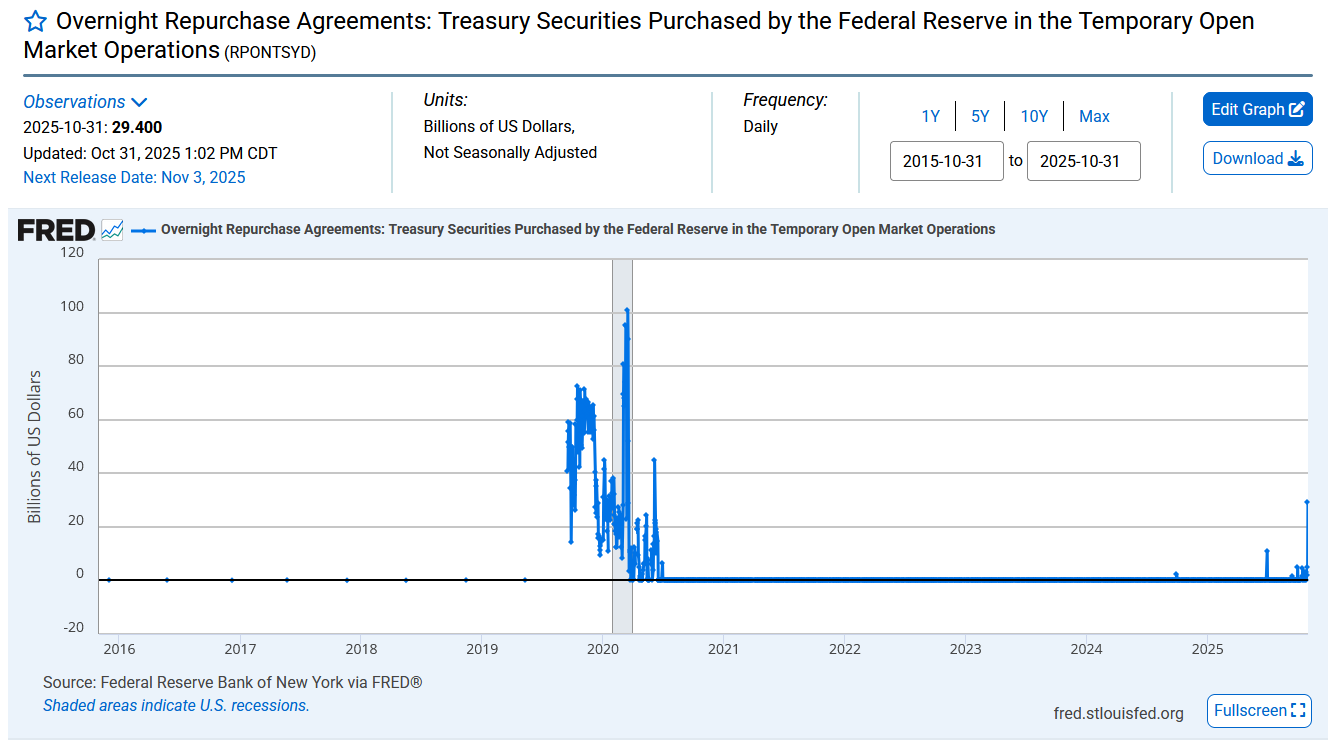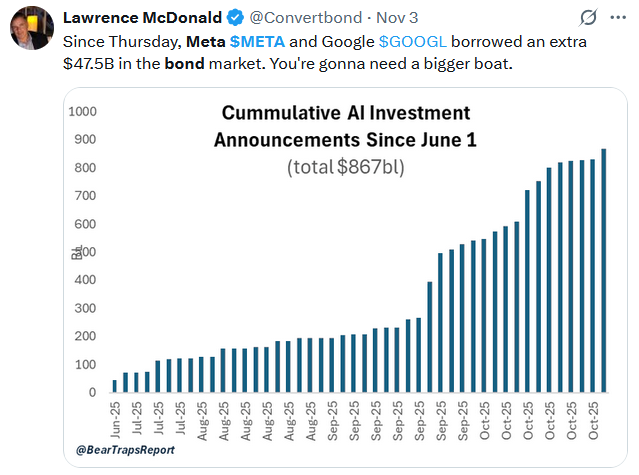Nvidia pushes back on AI bubble narrative as Blackwell drives Q3 beat, shares jump
Sarah Friar, OpenAI’s CFO, spoke at a Wall Street Journal technology conference to update the audience on the potential of AI. While her comments were very optimistic, she noted that OpenAI seeks continued capital inflows, highlighting the lynchpin for AI development.
Her quote below, courtesy of Bloomberg, takes traditional bank and industry financing a step further. Notably, she mentions a role for the US government in backing or guaranteeing loans to OpenAI. Moreover, OpenAI’s need for such support underscores its burgeoning capital requirements.
In addition to OpenAI’s deals with chipmakers, the ChatGPT maker is also eying a broad mix of financing vehicles to fund its infrastructure efforts. Friar said OpenAI is “looking for an ecosystem of banks [and] private equity” to support its ambitious plans. She also hinted at a role for the US government to “backstop the guarantee that allows the financing to happen,” but did not elaborate on how this would work. – Bloomberg (LINK)
After a backlash from her remarks, she clarified her statement on LinkedIn as follows:
I want to clarify my comments earlier today. OpenAI is not seeking a government backstop for our infrastructure commitments. I used the word ‘backstop’ and it muddied the point. My point was that American strength in technology will come from both the private sector and government playing their part.
Both the original statement and her clarification make it clear that OpenAI, despite the massive fundraising effort they have already accomplished, still needs a lot more capital. OpenAI seeks additional resources to maintain its leadership role in AI. The graph below shows how OpenAI and the rest of the industry have been self-funding to meet their needs.
More recently, and detailed further in this Commentary, a $30 billion bond offering by Meta (NASDAQ:META) and $25 billion deal by Google (NASDAQ:GOOGL) point to the possibility that earnings and cash flows from industry players are no longer sufficient to cover AI development costs.

The Standing Repo Facility Points To Stress
In September of 2019, the liquidity markets froze as the largest banks would not lend money overnight to other financial institutions on a collateralized basis, despite the near-zero risk of default. The result was a spike in very short-term yields and the Fed taking emergency measures, including three rate cuts and QE, to improve liquidity conditions.
One of these remedies was the Standing Repo Facility (SRF). The SRF allows eligible financial institutions to borrow cash overnight from the Fed by pledging Treasury securities as collateral at a fixed rate. This backstop is priced at a higher interest rate than the repo markets, effectively creating a ceiling on overnight borrowing costs.
Recently, banks have been tapping the SRF, indicating they were unable to obtain overnight funding from traditional sources. This is likely due to the strained liquidity conditions we have been mentioning for the last few weeks. As we share below, the program was used extensively during the 2019 liquidity freeze and during the beginning of COVID-related liquidity stress.
As we see, the recent usage is relatively small compared to those periods, but it is increasing. The standing repo facility should help avoid a liquidity problem like the one in 2019. However, with everyone watching, it may also raise concerns among liquidity providers, further exacerbating liquidity issues. 
Funding AI
As we led, OpenAI seeks significant financing. It’s not just them. Consider the following bond deals priced over the last week:
Meta priced a $30 billion bond deal on October 30, 2025. The deal offered investors six maturities, ranging from 5 to 40 years. Investors clamored for the bonds, as evidenced by $125 billion in orders, which is over 4x the number of bonds for sale. This capital is for funding AI and data center expansion.
Alphabet’s (Google) $25 billion bond deal ($17.5 billion USD and €6.5 billion EUR) was priced on November 3, 2025. The USD portion comprised eight tranches ranging from 3 to 50 years. Like Meta’s offering, Google’s also attracted significant interest. They reported $90 billion in orders. The proceeds are to be used to fund Google’s AI infrastructure spending.
As we share below in the Tweet of the Day, the cumulative US dollar investments into AI in just the last five months are nearing $1 trillion.
Tweet of the Day

